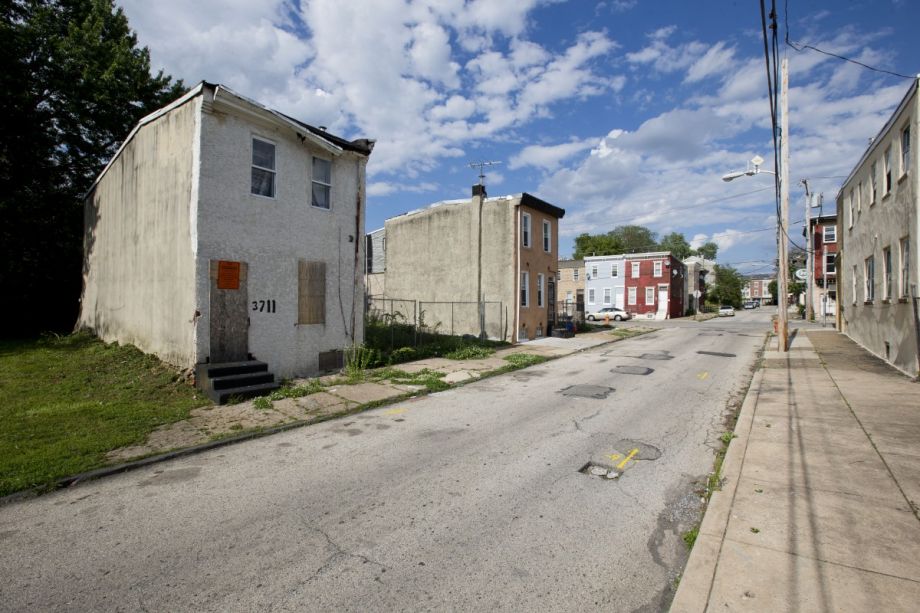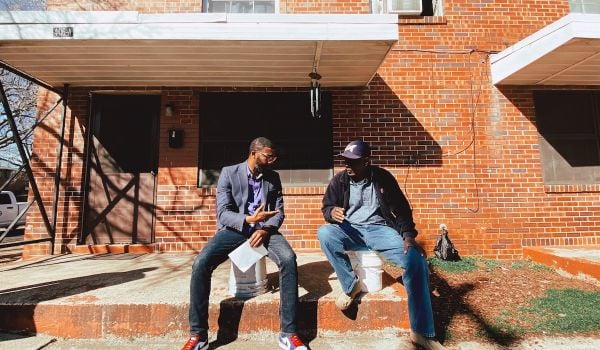The controversial “broken window theory” of policing dictates that you go after the small crimes, and the big ones will fall. Applied to blight, that school of thought means restoring abandoned houses on otherwise intact blocks as affordable units so the surrounding neighborhood gets better — and for less money than the more common approach of building or renovating homes on a larger scale.
That’s the main finding of recent research that focused on two companies that used a “scattered-site model” for producing affordable housing in West Philadelphia. The companies, West Philadelphia Real Estate (WPRE) and Neighborhood Restorations (NR), developed the model in 1989 as a way to leverage low-income housing tax credits for maximum impact. The study, conducted by May 8 Consulting and Reinvestment Fund, found that the scattered-site model delivered far more bang for the buck on several fronts:
- Sale prices for homes within a quarter mile of the scattered-site projects increased twice as much as those within a quarter-mile of single-site projects: 50 percent vs. 25 percent.
- Twenty scattered-site units have the same positive impact on their surrounding communities as 40 single-site units.
- The scattered-site units also cost less than single-site construction — 24 percent less than new construction and 27 percent less than rehabilitation.
- And they were built without public subsidy beyond the low-income housing tax credits; by comparison, single-site projects required public subsidies of anywhere from 10 to 52 percent of their construction costs.
Jim Levin, founder and principal of NR, explained that his firm’s approach at first was to obtain individual abandoned houses on otherwise fully occupied blocks. As more and more single vacant properties were rehabbed, the company moved on to acquiring multiple houses on a block in order to reach a critical mass. Its first project rehabbed six single-family residences and two duplexes for a total of 10 affordable units; its most recent was an 80-unit project.
“We try to get all the vacancies on the blocks we have a presence on, which we can’t always do due to ownership issues,” Levin says. NR obtains homes from the city’s inventory of vacant property, and through tax sales and purchases on the open market. Because the houses are rebuilt using the tax credits, they are offered as rentals to tenants who make up to 60 percent of the area median income.
Levin notes that this approach has multiple benefits beyond their cost-effectiveness. NR’s approach promotes socioeconomic diversity by mixing lower-income and better-off residents, and it stimulates others to redevelop and improve their properties. And, of course, the neighbors see their own blocks and property values rise.
“Many of these people are homeowners who have investments in their blocks,” he says, “and they take a [financial] hit when there’s a vacancy. When we come in, they’re very, very happy.”
Reinvestment Fund has provided financing for NR projects since its fifth one, in 1994. “There’s been a preference among housing finance agencies to prefer the single-site model because of beliefs about scale and efficiency,” says Ira Goldstein, Reinvestment Fund president of policy solutions. “What this research shows is that you can use this tool [the tax credit] to produce smaller projects that are more cost-effective.”
Goldstein notes that while the study shows that using a scattered-site approach to building affordable housing is more effective overall, that doesn’t mean it’s the right approach for every situation.
“There are threshold levels where the nature of the distress in a neighborhood or the magnitude of development in a single site can have more impact,” he says. “But if you have a neighborhood where you can go in and pluck every fifth or sixth property on an otherwise well-occupied block, and you go in year after year and pluck properties that are vacant, that has a better return than one big development on a single spot.”
NR’s own recent experience offers proof of Goldstein’s observation. “Because of what we and others have done” with rehabbing individual houses, Levin says, “property values have gone up, so it’s harder to get properties.” But Levin adds that “there are still a good number of properties” in West Philadelphia that can serve as spark plugs for block revitalization.
Goldstein says that the scattered-site approach should be used as the foundation of a long-term strategy of “building from strength” in order to revitalize neighborhoods. “The traditional model has been that you find where the epicenter of distress is and work your way out of it.” With this model, he says, “you have an intact block, so you fill it in, then you keep filling it in and filling it in” on adjacent intact blocks.
That approach will probably work better in what Goldstein refers to as “opportunity-rich areas” that have a number of civic assets to draw on. The presence of major employers on the district’s eastern edge, a large number of parks and playgrounds, and good public transportation, for instance, makes West Philadelphia ripe for scattered-site revitalization, he says.
What may be just as important as the cost-effectiveness findings, Goldstein says, is that the research demonstrates that “the Low Income Housing Tax Credit is the single most effective tool for producing affordable housing of all the federal programs. You’re not getting a lot of directly federally subsidized housing built, and the tax credit is a financial tool that can be deployed in different ways.” Using it to produce scattered-site infill housing also has the virtue of working much like actual housing markets work when reclaiming neighborhoods: one block at a time.
This article is one in a 10-part series about reclaiming vacant properties underwritten by the Center for Community Progress. Read more here.

Next City contributor Sandy Smith is the home and real estate editor at Philadelphia magazine. Over the years, his work has appeared in Hidden City Philadelphia, the Philadelphia Inquirer and other local and regional publications. His interest in cities stretches back to his youth in Kansas City, and his career in journalism and media relations extends back that far as well.
Follow Sandy .(JavaScript must be enabled to view this email address)
















